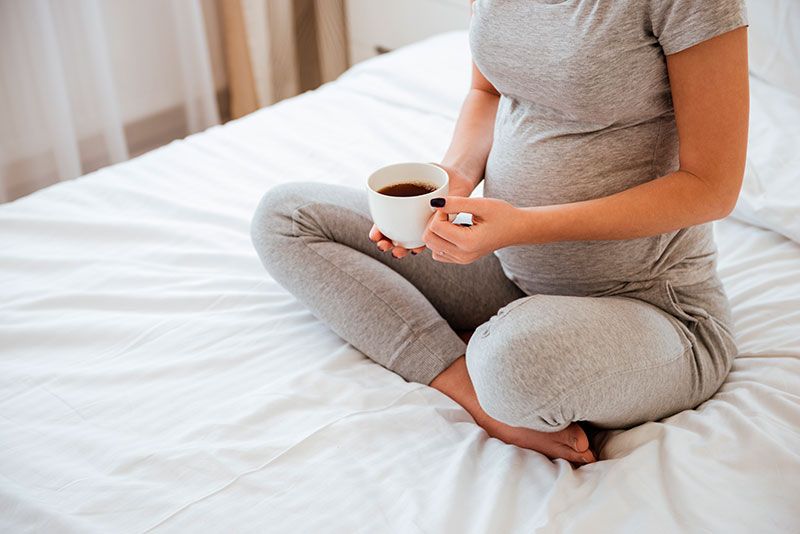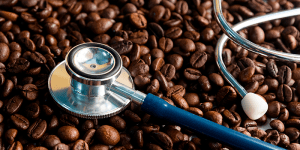La ingesta de cafeína materna durante el embarazo se asocia con el peso al nacer pero no con la longitud
28-04-2017
El objetivo de este estudio es investigar la asociación entre el consumo materno de cafeína y diferentes ocurrencias como la duración gestacional, el peso al nacer y el riesgo de presentar bajo peso al nacer (BPN). Se incluyeron 59.123 mujeres con embarazos sin complicaciones y partos únicos. El consumo de cafeína de diferentes alimentos fue reportado en las semanas gestacionales 17, 22 y 30. La principal fuente de cafeína fue el café. Únicamente la cafeína proveniente del café estuvo asociada con gestación prolongada (8h/100mg/día, P < 0,0000001). Ni la cafeína total, ni la cafeína del café estuvieron asociadas al riesgo de parto pretermino. El consumo de cafeína de diferentes fuentes medida a repetición durante el embarazo, estuvo asociado con menor peso al nacer (P < 0,0000000001). El consumo de cafeína de 200 a 300 mg/día incrementó las probabilidades de BPN (P< 0,00005), comparado con 0 a 50 mg/día. Estos hallazgos tienen implicaciones clínicas incluso para consumos de cafeína menores al máximo recomendado (200mg/día en los países nórdicos y EEUU, 300mg/día de acuerdo a la OMS), el cual estuvo asociado a un aumento del riesgo de presentar BPN.
1. Barker DJ: The fetal and infant origins of adult disease. BMJ 1990, 301:1111.
2. Whincup PH, Kaye SJ, Owen CG, Huxley R, Cook DG, Anazawa S, Barrett- Connor E, Bhargava SK, Birgisdottir BE, Carlsson S, de Rooij SR, Dyck RF, Eriksson JG, Falkner B, Fall C, Forsen T, Grill V, Gudnason V, Hulman S, Hypponen E, Jeffreys M, Lawlor DA, Leon DA, Minami J, Mishra G, Osmond C, Power C, Rich-Edwards JW, Roseboom TJ, Sachdev HS, et al:
Birth weight and risk of type 2 diabetes: a systematic review. JAMA 2008, 300:2886-2897.
3. Roseboom TJ, Painter RC, van Abeelen AF, Veenendaal MV, de Rooij SR: Hungry in the womb: what are the consequences? Lessons from the Dutch famine. Maturitas 2011, 70:141-145.
4. Oesterheld JR: A review of developmental aspects of cytochrome P450. J Child Adolesc Psychopharmacol 1998, 8:161-174.
5. Andersson H, Hallström H, Kihlman BA: In Intake of caffeine and other methylxanthines during pregnancy and risk for adverse effects in pregnant women and their foetuses. Volume 2004. Copenhagen, Denmark: Nordic Council of Ministers; 2004.
6. Wilkinson JM, Pollard I: Accumulation of theophylline, theobromine and paraxanthine in the fetal rat brain following a single oral dose of caffeine. Brain Res Dev Brain Res 1993, 75:193-199.
7. Aldridge A, Bailey J, Neims AH: The disposition of caffeine during and after pregnancy. Semin Perinatol 1981, 5:310-314.
8. World Health Organization: The world health report 2002. Reducing Risks, Promoting Healthy Life Geneva, Switzerland: World Health Organization; 2002.
9. ACOG CommitteeOpinion No. 462: Moderate caffeine consumption during pregnancy. Obstet Gynecol 2010, 116:467-468.
10. NNR Project group: In Nordic nutrition recommendations 2004, Integrating nutrition and physical activity. Volume Nord 2004.. 4 edition. Copenhagen, Denmark: Nordic Council of Ministers; 2004(13).
11. Norwegian Food Safety Authority: Dietary advice for pregnant women [Kostråd til gravide, in Norwegian].[http://www.matportalen.no/ rad_til_spesielle_grupper/tema/gravide/].
12. Bech BH, Nohr EA, Vaeth M, Henriksen TB, Olsen J: Coffee and fetal death: a cohort study with prospective data. Am J Epidemiol 2005, 162:983-990.
13. Cnattingius S, Signorello LB, Anneren G, Clausson B, Ekbom A, Ljunger E, Blot WJ, McLaughlin JK, Petersson G, Rane A, Granath F: Caffeine intake and the risk of first-trimester spontaneous abortion. N Engl J Med 2000, 343:1839-1845.
14. Fenster L, Eskenazi B, Windham GC, Swan SH: Caffeine consumption during pregnancy and fetal growth. Am J Public Health 1991, 81:458-461.15. Giannelli M, Doyle P, Roman E, Pelerin M, Hermon C: The effect of caffeine consumption and nausea on the risk of miscarriage. Paediatr Perinat Epidemiol 2003, 17:316-323.
16. Infante-Rivard C, Fernandez A, Gauthier R, David M, Rivard GE: Fetal loss associated with caffeine intake before and during pregnancy. JAMA 1993, 270:2940-2943.
17. Mills JL, Holmes LB, Aarons JH, Simpson JL, Brown ZA, Jovanovic- Peterson LG, Conley MR, Graubard BI, Knopp RH, Metzger BE: Moderate caffeine use and the risk of spontaneous abortion and intrauterine growth retardation. JAMA 1993, 269:593-597.
18. Nawrot P, Jordan S, Eastwood J, Rotstein J, Hugenholtz A, Feeley M: Effects of caffeine on human health. Food Addit Contam 2003, 20:1-30.
19. Parazzini F, Chiaffarino F, Chatenoud L, Tozzi L, Cipriani S, Chiantera V, Fedele L: Maternal coffee drinking in pregnancy and risk of small for gestational age birth. Eur J Clin Nutr 2005, 59:299-301.
20. Peck JD, Leviton A, Cowan LD: A review of the epidemiologic evidence concerning the reproductive health effects of caffeine consumption: a 2000-2009 update. Food Chem Toxicol 2010, 48:2549-2576.
21. Rasch V: Cigarette, alcohol, and caffeine consumption: risk factors for spontaneous abortion. Acta Obstet Gynecol Scand 2003, 82:182-188.
22. Tolstrup JS, Kjaer SK, Munk C, Madsen LB, Ottesen B, Bergholt T, Gronbaek M: Does caffeine and alcohol intake before pregnancy predict the occurrence of spontaneous abortion? Hum Reprod 2003, 18:2704-2710.
23. Wen W, Shu XO, Jacobs DR, Brown JE: The associations of maternal caffeine consumption and nausea with spontaneous abortion. Epidemiology 2001, 12:38-42.
24. Savitz DA, Hertz-Picciotto I, Poole C, Olshan AF: Epidemiologic measures of the course and outcome of pregnancy. Epidemiol Rev 2002, 24:91-101.
25. Saigal S, Doyle LW: An overview of mortality and sequelae of preterm birth from infancy to adulthood. Lancet 2008, 371:261-269.
26. Moster D, Lie RT, Markestad T: Long-term medical and social consequences of preterm birth. N Engl J Med 2008, 359:262-273.
27. Pallotto EK, Kilbride HW: Perinatal outcome and later implications of intrauterine growth restriction. Clin Obstet Gynecol 2006, 49:257-269.
28. Magnus P, Irgens LM, Haug K, Nystad W, Skjaerven R, Stoltenberg C: Cohort profile: the Norwegian Mother and Child Cohort Study (MoBa). Int J Epidemiol 2006, 35:1146-1150.
29. Klonoff-Cohen H, Bleha J, Lam-Kruglick P: A prospective study of the effects of female and male caffeine consumption on the reproductive endpoints of IVF and gamete intra-Fallopian transfer. Hum Reprod 2002, 17:1746-1754.
30. Mikkelsen TB, Osterdal ML, Knudsen VK, Haugen M, Meltzer HM, Bakketeig L, Olsen SF: Association between a Mediterranean-type diet and risk of preterm birth among Danish women: a prospective cohort study. Acta Obstet Gynecol Scand 2008, 87:325-330.
31. Maslova E, Bhattacharya S, Lin SW, Michels KB: Caffeine consumption during pregnancy and risk of preterm birth: a meta-analysis. Am J Clin Nutr 92:1120-1132.
32. Pennell CE, Jacobsson B, Williams SM, Buus RM, Muglia LJ, Dolan SM, Morken NH, Ozcelik H, Lye SJ, Relton C: Genetic epidemiologic studies of preterm birth: guidelines for research. Am J Obstet Gynecol 2007, 196:107-118.
33. Norwegian Institute of Public Health: The Norwegian Mother and Child Cohort Study. [http://www.fhi.no/eway/default.aspx?pid = 238&trg=MainArea_5811&MainArea_5811 = 5895:0:15,3046:1:0:0:::0:0].
34. Irgens LM: The Medical Birth Registry of Norway. Epidemiological research and surveillance throughout 30 years. Acta Obstet Gynecol Scand 2000, 79:435-439.
35. Meltzer HM, Brantsaeter AL, Ydersbond TA, Alexander J, Haugen M: Methodological challenges when monitoring the diet of pregnant women in a large study: experiences from the Norwegian Mother and Child Cohort Study (MoBa). Matern Child Nutr 2008, 4:14-27.
36. Marsal K, Persson PH, Larsen T, Lilja H, Selbing A, Sultan B: Intrauterine growth curves based on ultrasonically estimated foetal weights. Acta Paediatr 1996, 85:843-848.
37. Skjaerven R, Gjessing HK, Bakketeig LS: Birthweight by gestational age in Norway. Acta Obstet Gynecol Scand 2000, 79:440-449.
38. Gardosi J, Chang A, Kalyan B, Sahota D, Symonds EM: Customised antenatal growth charts. Lancet 1992, 339:283-287.
39. Lauritzen J: FoodCalc. [http://www.ibt.ku.dk/jesper/FoodCalc/Default.htm].
40. Norwegian Food Safety Authority Norwegian Directorate of Health Department of Nutrition-University of Oslo: Matvaretabellen (The Norwegian Food Table, in Norwegian). [http://www.matvaretabellen.no/].
41. Ministry of Agriculture Fisheries and Food-Food Safety Directorate: Survey of Caffeine and Other Methylxanthines in Energy Drinks and Other Caffeine-Containing Products (updated). Food Surveillance Information Sheet. [http://archive.food.gov.uk/maff/archive/food/infsheet/1998/no144/144caff.htm].
42. Brantsaeter AL, Haugen M, Rasmussen SE, Alexander J, Samuelsen SO, Meltzer HM: Urine flavonoids and plasma carotenoids in the validation of fruit, vegetable and tea intake during pregnancy in the Norwegian Mother and Child Cohort Study (MoBa). Public Health Nutr 2007, 10:838-847.
43. Brantsaeter AL, Haugen M, Alexander J, Meltzer HM: Validity of a new food frequency questionnaire for pregnant women in the Norwegian Mother and Child Cohort Study (MoBa). Matern Child Nutr 2008, 4:28-43.
44. Womack CJ, Saunders MJ, Bechtel MK, Bolton DJ, Martin M, Luden ND, Dunham W, Hancock M: The influence of a CYP1A2 polymorphism on the ergogenic effects of caffeine. J Int Soc Sports Nutr 2012, 9:7.
45. CARE Study Group: Maternal caffeine intake during pregnancy and risk of fetal growth restriction: a large prospective observational study. BMJ 2008, 337:a2332.
46. Vidaeff AC, Ramin SM: Potential biochemical events associated with initiation of labor. Curr Med Chem 2008, 15:614-619.
47. Moreira AS, Nunes FM, Domingues MR, Coimbra MA: Coffee melanoidins: structures, mechanisms of formation and potential health impacts. Food Funct 2012, 3:903-915.
48. Clausson B, Granath F, Ekbom A, Lundgren S, Nordmark A, Signorello LB, Cnattingius S: Effect of caffeine exposure during pregnancy on birth weight and gestational age. Am J Epidemiol 2002, 155:429-436.
49. Klebanoff MA, Levine RJ, Clemens JD, Wilkins DG: Maternal serum caffeine metabolites and small-for-gestational age birth. Am J Epidemiol 2002, 155:32-37.
50. Bracken MB, Triche EW, Belanger K, Hellenbrand K, Leaderer BP: Association of maternal caffeine consumption with decrements in fetal growth. Am J Epidemiol 2003, 157:456-466.
51. Tough SC, Newburn-Cook CV, White DE, Fraser-Lee NJ, Faber AJ, Frick C, Svenson LW, Sauve R: Do maternal characteristics and past pregnancy experiences predict preterm delivery among women aged 20 to 34? J Obstet Gynaecol Can 2003, 25:656-666.
52. Khoury JC, Miodovnik M, Buncher CR, Kalkwarf H, McElvy S, Khoury PR, Sibai B: Consequences of smoking and caffeine consumption during pregnancy in women with type 1 diabetes. J Matern Fetal Neonatal Med 2004, 15:44-50.
53. Santos IS, Matijasevich A, Valle NC: Mate drinking during pregnancy and risk of preterm and small for gestational age birth. J Nutr 2005, 135:1120-1123.
54. Bech BH, Obel C, Henriksen TB, Olsen J: Effect of reducing caffeine intake on birth weight and length of gestation: randomised controlled trial. BMJ 2007, 334:409.
55. Haugen M, Meltzer HM, Brantsaeter AL, Mikkelsen T, Osterdal ML, Alexander J, Olsen SF, Bakketeig L: Mediterranean-type diet and risk of preterm birth among women in the Norwegian Mother and Child Cohort Study (MoBa): a prospective cohort study. Acta Obstet Gynecol Scand 2008, 87:319-324.
56. Kirkinen P, Jouppila P, Koivula A, Vuori J, Puukka M: The effect of caffeine on placental and fetal blood flow in human pregnancy. Am J Obstet Gynecol 1983, 147:939-942.
57. Weathersbee PS, Lodge JR: Caffeine: its direct and indirect influence on reproduction. J Reprod Med 1977, 19:55-63.
58. Lawson CC, LeMasters GK, Levin LS, Liu JH: Pregnancy hormone metabolite patterns, pregnancy symptoms, and coffee consumption. Am J Epidemiol 2002, 156:428-437.
59. Grosso LM, Rosenberg KD, Belanger K, Saftlas AF, Leaderer B, Bracken MB: Maternal caffeine intake and intrauterine growth retardation. Epidemiology 2001, 12:447-455.
60. Orskou J, Henriksen TB, Kesmodel U, Secher NJ: Maternal characteristics and lifestyle factors and the risk of delivering high birth weight infants. Obstet Gynecol 2003, 102:115-120.
61. Vik T, Bakketeig LS, Trygg KU, Lund-Larsen K, Jacobsen G: High caffeine consumption in the third trimester of pregnancy: gender-specific effects on fetal growth. Paediatr Perinat Epidemiol 2003, 17:324-331.62. Grosso LM, Triche EW, Belanger K, Benowitz NL, Holford TR, Bracken MB: Caffeine metabolites in umbilical cord blood, cytochrome P-450 1A2 activity, and intrauterine growth restriction. Am J Epidemiol 2006, 163:1035-1041.
63. Infante-Rivard C: Caffeine intake and small-for-gestational-age birth: modifying effects of xenobiotic-metabolising genes and smoking. Paediatr Perinat Epidemiol 2007, 21:300-309.
64. Hernandez-Diaz S, Schisterman EF, Hernan MA: The birth weight “paradox” uncovered? Am J Epidemiol 2006, 164:1115-1120.
65. Nilsen RM, Vollset SE, Gjessing HK, Skjaerven R, Melve KK, Schreuder P, Alsaker ER, Haug K, Daltveit AK, Magnus P: Self-selection and bias in a large prospective pregnancy cohort in Norway. Paediatr Perinat Epidemiol 2009, 23:597-608.
66. Svilaas A, Sakhi AK, Andersen LF, Svilaas T, Strom EC, Jacobs DR, Ose L, Blomhoff R: Intakes of antioxidants in coffee, wine, and vegetables are correlated with plasma carotenoids in humans. J Nutr 2004, 134:562-567.
67. Kvalvik LG, Nilsen RM, Skjaerven R, Vollset SE, Midttun O, Ueland PM, Haug K: Self-reported smoking status and plasma cotinine concentrations among pregnant women in the Norwegian Mother and Child Cohort Study. Pediatr Res 2012, 72:101-107.















